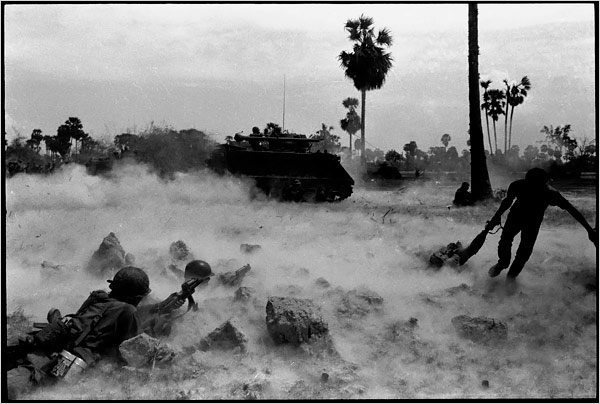Photos by Lyndsey Letourneau
After completing all of the blog posts this semester, I have a revised definition of photojournalism. In the beginning of the semester, I only considered photojournalism to be a photograph of a particular moment. However, there is much more to it. The photograph is a moment in history that tells a story. Whether it is war photography, sports photography, or photographs of a political event, each photograph tells a story. The photographer is expected to be both a photographer and a journalist. There is more to photojournalism than just taking a photograph. Before my research, I assumed that photojournalists were just in the right place at the right time. However, I learned that a lot of photojournalists take their photographs with certainty and do it purposefully. In Jenna Costa's photojournalist profile, she spoke about Robert Capa and stated, "He always kept his photos real and made sure to take them for the right reasons. He took photos of war for the public, not to just take famous photos." Most photojournalists aim to bring awareness to the public. They do not want to edit or stage photographs because they want people to see the truth. There is also an emotional impact that photojournalism has. A photojournalist attempts to have some type of emotional response from his or her viewers. In Yezenia's photojournalist profile, she stated that Ron Haviv, "was all about emotional connections in his work, making it so that viewers made emotional connections with his images." Photojournalists seek to give a visual representation to their viewers. A person can be told that something is happening, but when they actually get to see a photograph of the situation, it adds more truth to the situation. In Devonte Dillion's photojournalist profile, he commented on Dith Pran's motivation and said, "he wanted people to be able to have a visual to go along with what was being told.

Photo by Robert Capa

Photo by Ron Haviv
Image Source:http://www.takegreatpictures.com/photo-tips/master-photographers/legendary-conflict-photographer-ron-haviv-interview
Photo by Dith Pran
The history of photojournalism is important to understand. It gives insight into how technology has evolved throughout time and gives people an appreciation for how far photography has come. It was a struggle to take a photograph in the earlier times. Some people do not understand how easy it is to take a photograph today compared to when people used the wet collodion process. It amazing to see the processes that needed to be completed in order to take one photograph. Also, the chemicals and other equipment that was needed. It is so easy to take a photograph and share it with people over the world today. Our technology timeline made me realize that we have come a long way in regards to photographic technology. The wet collodion process was one of the first photographic processes and it was extremely time consuming and difficult. In order to get the perfect picture you had to be precise. The image below by Jody Ake displays a photograph taken using the wet collodion process.
Photo by Jody Ake
Image Source: https://www.pinterest.com/pin/522910206708611067/
An "Ah-ha" moment was when I completed the research on what motivates photojournalists. It was interesting to develop my own motivations and compare them to those of photojournalists. I figured out that a lot of photojournalists share the same motivations as me. A lot of photojournalists do not take photographs just for the money or fame. They often take the photographs to raise awareness and bring about social change. They give voices to those who are voiceless. My motivations included leaving an impact, passion, and helping others. I think that each one of my motivations would be the same for photojournalists. Most of them want to help others and have a passion for what they are doing. Passion is important because if a person does not truly love what they are doing, the quality of their work will not be great.
I think that another ah-ha moment occurred during the blog post research on "Can Photographs Change the World?". It really made me think about the impact that images have on the world. My opinion regarding this subject was that photographs do not bring about immediate change, but do raise awareness. At first, I thought that photographs could change the world, but after I thought about the topic more, I decided that it depends if the person wants to act on the feelings that are created by the image. Social change cannot occur just because a person sees a picture. Action is developed from the feelings created and if the image leaves a big enough impact on the person. For example, the photograph taken by Kevin Carter of the vulture stalking the child. The image did not spark changes, but it did raise awareness for the famine.
Photo by Kevin Carter





No comments:
Post a Comment